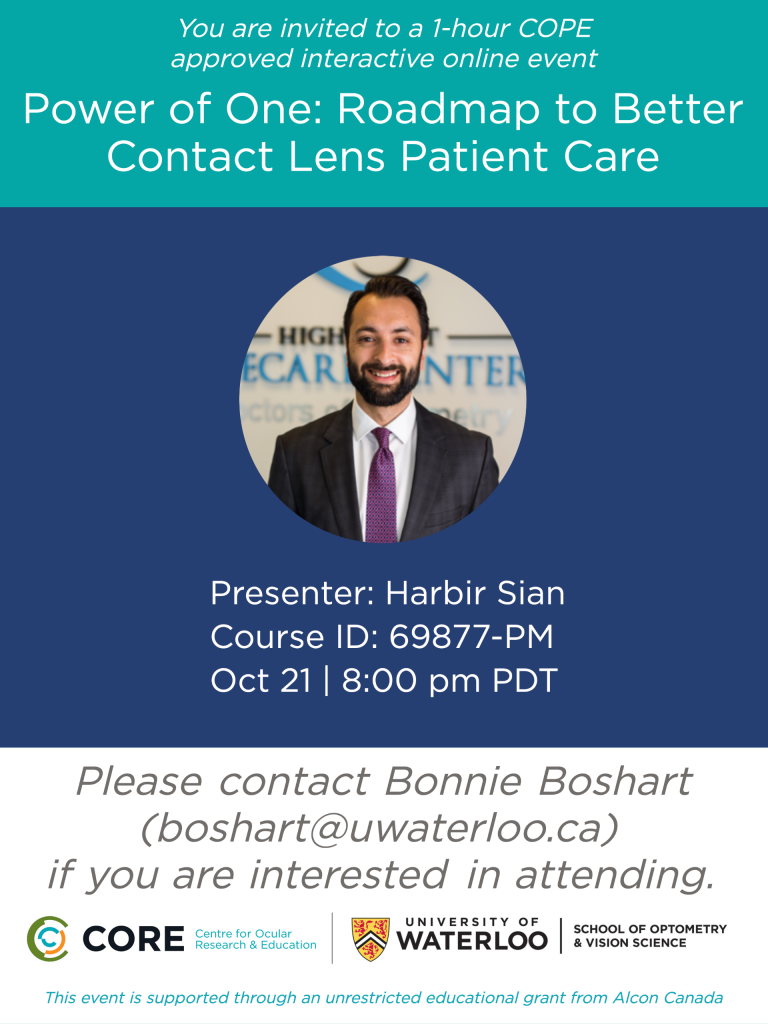Contact Lens Update Issue 81 Offers Guidance from Top Researchers & Clinicians
WATERLOO, Ontario, December 18, 2024—In response to widespread demand from eye care professionals to better understand myopia progression and intervention, the Centre for Ocular Research & Education (CORE) has themed Issue 81 of Contact Lens Update as “The Science of Myopia Control: What Every ECP Should Know.” The bi-monthly publication is available at no charge by visiting ContactLensUpdate.com.
“We are in the midst of a global myopia epidemic and public health crisis. Its prevalence continues to increase, with an estimated 50% of the world’s population projected to become myopic by the year 2050. High myopia is associated with the risk of serious ocular health problems which can lead to vision loss, such as retinal detachment, myopic maculopathy, and glaucoma,” said Jill Woods, Head of Clinical Research at CORE.
“It is crucial for practitioners to be aware of the latest scientific findings to ensure their patients are given the highest standard of care. Intervention to slow myopia’s progression is particularly important for children, preventing them from becoming highly myopic as they age.”
Debbie Jones, Clinical Professor and Lead Clinical Scientist at CORE, School of Optometry & Vision Science, University of Waterloo, recaps the September 2024 International Myopia Conference in the issue’s editorial. Her highlights include ways of identifying people at risk of developing myopia, barriers to increasing the amount of time spent outdoors, and new potential treatments such as coloured light therapies, pharmaceutical treatment using a caffeine derivative, and optical films for spectacle lenses.
The feature article is written by Vishakha Thakrar, an optometrist and owner of a specialty contact lens practice in Vaughan, Ontario, Canada. She outlines the findings of a systematic review investigating the intervention-dependent rebound effect that may occur after stopping myopia control treatment. The review presents studies that examined a range of optical, pharmaceutical, and low-level red light therapies, including spectacles and soft contact lenses designed for myopia control and orthokeratology.
The conference highlight is contributed by Lisa Ostrin, Associate Professor at the University of Houston College of Optometry, Texas, United States. The abstract summarizes a presentation from the 2024 International Myopia Conference describing the safety profile of an instrument used for low-level red light therapy. The work compares the emitted irradiance level to criteria established by the American National Standards Institute (ANSI) to determine the class of laser, instrument group, and maximum permitted exposure time.
Optometrist Oliver Woo, founder and chief clinical director of his eponymously named orthokeratology and myopia management clinic in Sydney, Australia, presents the issue’s clinical insight column. The case report details a young patient’s journey through different therapies to manage her myopia, with Dr. Woo delving into why it is important to customize the replacement frequency of orthokeratology lenses to each patient.
Published six times per year, Contact Lens Update provides a global platform for unbiased clinical insights based in current research. Since 2011, each issue has provided dependable and up-to-date ocular health information for more than 60,000 leading eye care professionals.
In addition to a complete archive of back issues, ContactLensUpdate.com offers a resource library that provides no-cost professional tools, patient resources, images and video. It also houses complimentary technical training videos produced by International Association of Contact Lens Educators, plus an industry glossary. Industry professionals can access the latest issue directly from ContactLensUpdate.com or sign up for email receipt[MM1] [SW2] of feature issues on the website.
The publication receives support from the educational arms of CooperVision and Johnson & Johnson Vision.
# # #
About the Centre for Ocular Research & Education (CORE)
The Centre for Ocular Research & Education (CORE) was established in 1988 at the University of Waterloo’s School of Optometry & Vision Science. Over the next three decades, the organization evolved from a three-person operation into a thriving hub of basic and applied research, collaborating with sponsors, agencies and academia on advanced biosciences, clinical research and education. Its uncompromising independence and results of the highest quality have been at the heart of many of the most prominent advances in eye health. Today, its team serves a range of ophthalmic sectors, including medical devices, ocular pharmaceuticals, digital technology and others, with a focus on the anterior segment. For more information, please visit core.uwaterloo.ca.
MEDIA CONTACT
Lyndon Jones, Director, CORE
+1.519.888.4065 or lwjones@uwaterloo.ca






